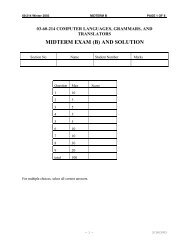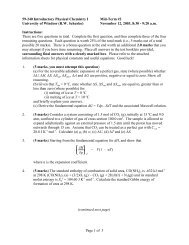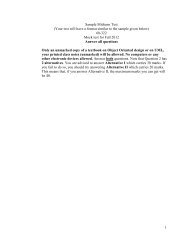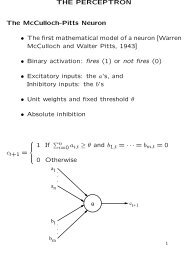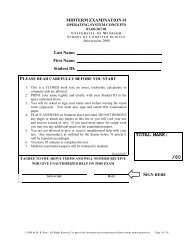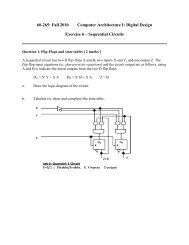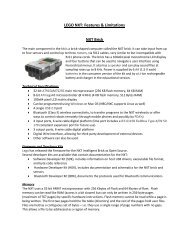Adjectives: A Uniform Semantic Approach - University of Windsor
Adjectives: A Uniform Semantic Approach - University of Windsor
Adjectives: A Uniform Semantic Approach - University of Windsor
You also want an ePaper? Increase the reach of your titles
YUMPU automatically turns print PDFs into web optimized ePapers that Google loves.
338 N. Abdullah and R.A. Frost<br />
Fig. 1. A taxonomy with properties<br />
With the typing rules <strong>of</strong> (11) in mind, the representation <strong>of</strong> the adjective phrase in<br />
(8) is as follows, || Jane|| = j:<br />
Blond = {j: T,…}: blond<br />
Woman = {j: woman,…}:woman<br />
Blond ∩ Woman = {j: blond: woman, …}: blond: woman<br />
Attractive = {j: blond: woman, …}: attractive<br />
Attractive ∩(Blond∩Woman)={j:attractive:blond:woman}:<br />
attractive:blond: woman<br />
The syntactic-semantic steps that led to the above representation are shown below.<br />
Fig. 2. Wide-scope reading <strong>of</strong> Jane is an attractive blond woman<br />
It should be noticed that from reading (8) the following can be deduced:<br />
Jane is blond<br />
Jane is a woman<br />
But not necessarily,<br />
Jane is attractive







